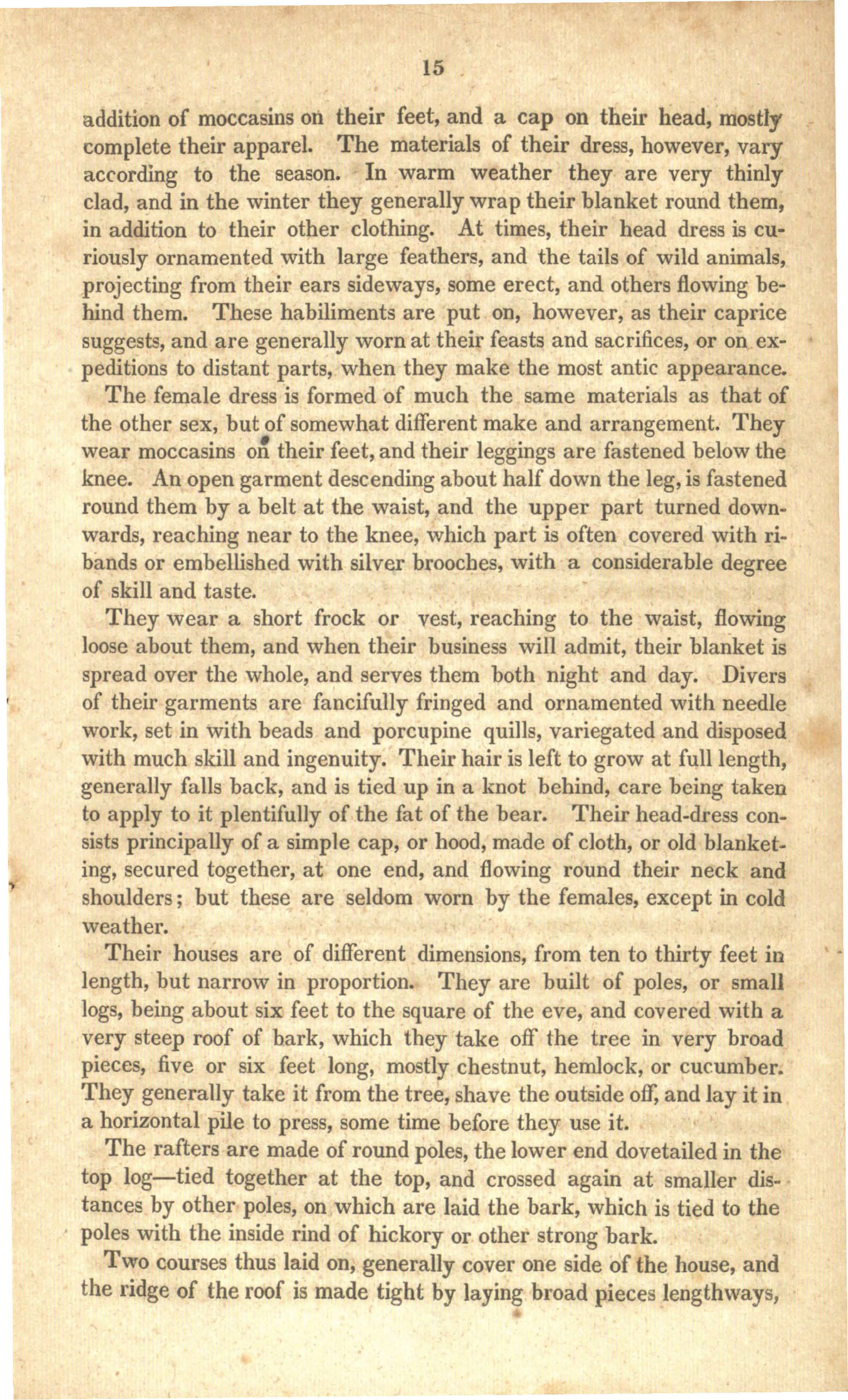addition of moccasins on their feet, and a
cap on their head, mostly
/ complete their apparel. The materials of their
dress, however, vary
according to the season. In warm weather they are very
thinly
clad, and in the winter they generally wrap their blanket round
them,
in addition to their other clothing. At times, their head dress is
cu-
riously ornamented with large feathers, and the tails of wild
animals,
projecting from their ears sideways, some erect, and others
flowing be-
hind them. These habiliments are put on, however, as their
caprice
suggests, and are generally worn at their feasts and sacrifices, or
on ex-
peditions to distant parts, when they make the most antic
appearance.
The female dress is formed of much the same material as that of
the other
sex, but of somewhat different make and arrangement. They
wear moccasins on
their feet, and their leggings are fastened
below the knee. An open garment
descending about half down the leg, is fastened
round them by a belt at the
waist, and the upper part turned down-
wards, reaching near to the knee,
which part is often covered with ri-
bands or embellished with silver
brooches, with a considerable degree
of skill and taste.
They wear a short frock or vest, reaching to the waist, flowing
loose about
them, and when their business will admit, their blanket is
spread over the
whole, and serves them both night and day. Divers
of their garments are
fancifully fringed and ornamented with needle
work, set in with beads and
porcupine quills, variegated and disposed
with much skill and ingenuity.
Their hair is left to grow at full length,
generally falls back, and is
tied up in a knot behind, care being taken
to apply to it plentifully of
the fat of the bear. Their head-dress con-
sists principally of a simple
cap, or hood, made of cloth, or old blanket-
ing, secured together, at one
end, and flowing round their neck and
shoulders; but these are seldom worn
by the females, except in cold
weather.
Their houses are of different dimensions, from ten to thirty feet
in length,
but narrow in proportion. They are built of poles, or small
logs, being
about six feet to the square of the eve, and covered with a
very steep roof
of bark, which they take off the tree in very broad
pieces, five or six
feet long, mostly chestnut, hemlock, or cucumber.
They generally take it
from the tree, shave the outside off, and lay it in
a horizontal pile to
press, some time before they use it.
The rafters are made of round poles, the lower end dovetailed in the
top log
- tied together at the top, and crossed again at smaller dis-
tances by
other poles, on which are laid the bark, which is tied to the
poles with
the inside rind of hickory or other strong bark.
Two courses thus laid on, generally cover one side of the house, and
the
ridge of the roof is made tight by laying broad pieces lengthways,

